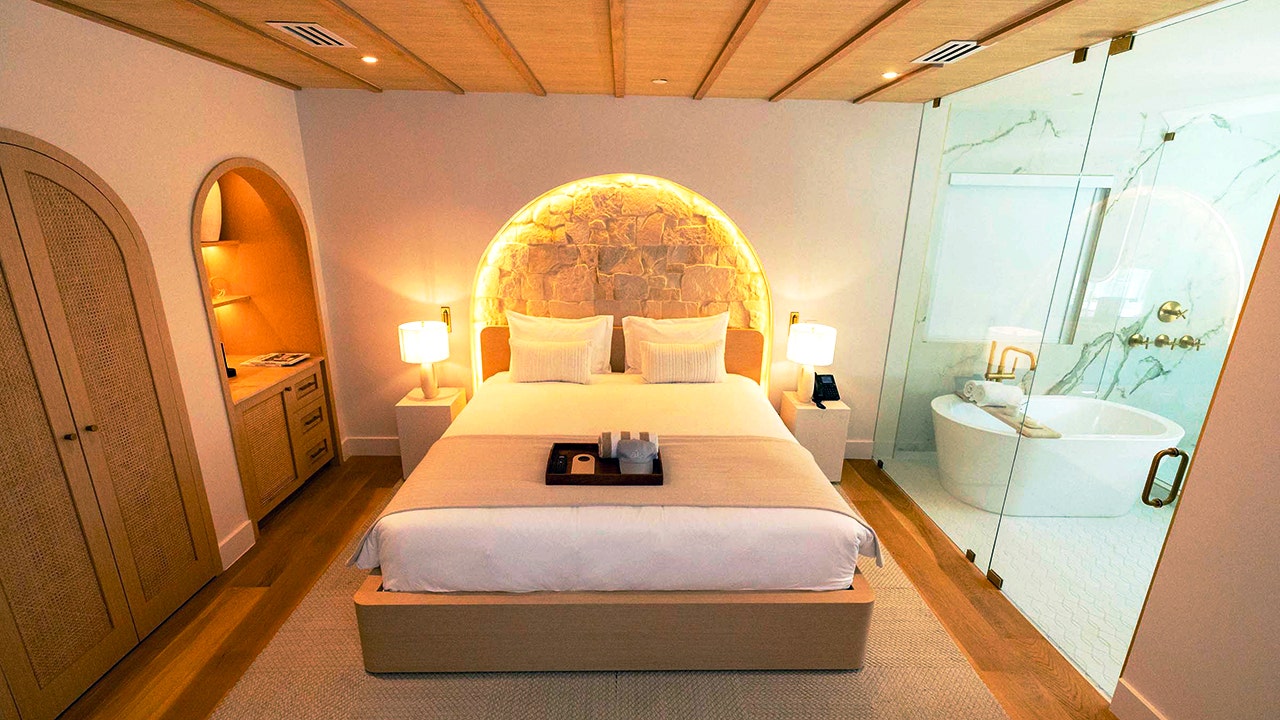What does an eclipse sound like? This device lets blind people hear the changing light

As It Happens6:39This device allows blind people to listen to the solar eclipse
A solar eclipse is undeniably a sight to behold. But this year, hundreds of people across North America will be able to listen to the rare celestial event, thanks to a device designed by astronomers.
Called LightSound, the handheld gadget converts changing light intensity into musical sounds in a process called sonification, allowing blind and low-vision people to experience the eclipse aurally as it unfolds.
Harvard astronomer Allyson Bieryla, who helped create LightSound, says the 2017 eclipse had a lot of people feeling “left out” because they couldn’t interact with the phenomenon “in a meaningful way.”
“So I think this device is one step toward giving the blind or low-vision individuals access to real data, to the eclipse, live,” Bieryla told As It Happens host Nil Köksal.
The LightSound team has distributed 900 of the gadgets to schools, museums and science centres across Canada, the U.S. and Mexico ahead of the April 8 solar eclipse.
When the moon passes between the sun and the Earth on Monday, temporarily darkening the skies, LightSound listeners will go on a real-time auditory journey, as delicate flute notes give way to clarinet and finally a low clicking sound to illustrate darkness.
As It Happens0:09What does an eclipse sound like?
A demo clip from the LightSound, a handheld device developed at Harvard University that translates changing light into sounds.
Bieryla developed LightSound in collaboration with astronomer Wanda Díaz-Merced, who is blind and regularly translates her data into audio to analyze patterns for her research.
“The sky belongs to everyone. And if this event is available to the rest of the world, it has to be available for the blind, too,” Díaz-Merced said.
“I want students to be able to hear the eclipse, to hear the stars.”
The idea was born out of broader accessibility discussions at Harvard in 2017, Bieryla said.
As the person who manages the astronomy department’s labs and telescopes, Bieryla says she approached Díaz-Merced about making sure those tools were accessible to blind or partially blind students.
“Then we were talking about the eclipse, because the eclipse was happening that summer. So we started thinking, how do we make this eclipse accessible? And so we decided to build this tool,” she said.

They had three working prototypes ready in time for the 2017 solar eclipse, which they tested at schools in Wyoming and Kentucky. Since then, the duo have been working with colleagues to perfect the device.
Sóley Hyman, a University of Arizona astronomer and musician, helped to make the soundscape more pleasant to the ears. Elliot Richards, an engineer at Harvard’s Center for Astrophysics, came up with a design that’s easier and more efficient to build.
To ramp production ahead of this year’s eclipse, the team ran maker workshops at universities and museums, where participants constructed hundreds of LightSounds.
They’ve also shared do-it-yourself instructions online.
“The project is completely open source,” Bieryla said. “We couldn’t have built this many without the community input that we had. It’s been great.”
Where can you listen?
The team sent LightSound devices to several Canadian institutions, all noted on an online map, including the Montreal Science Centre, the Ontario Science Centre in Toronto, and the Canadian Museum of Nature in Ottawa.
The Montreal Science Centre says there will be two LightSounds on hand during its eclipse viewing events on Monday, as well as staff to help guide people in their use.
The Ontario Science Centre has been using its LightSound in educational livestreams for kids, and says a scientist will demonstrate the device during the eclipse on Monday.
The University of Montreal, which has two LightSounds, has lent them to Astropoly, a student astronomy and astrophysics group at Polytechnique de Montréal, which will host an eclipse watch on campus.

Yuki Hatch — a high school senior in Austin, Texas, with limited vision — says she and her classmates at the Texas School for the Blind and Visually Impaired plan to sit outside in the school’s grassy quad on Monday and use LightSound devices to take in the eclipse.
“I’m looking forward to being able to actually hear the eclipse instead of seeing it,” she said. “Eclipses are very beautiful things, and everyone should be able to experience it once in their lifetime.”
In Canada, the path of the eclipse starts in southeastern Ontario shortly after 2 p.m. ET, before making its way across Quebec, New Brunswick and Newfoundland.
For those outside the path, the LightSound team is also planning to livestream the celestial event and share the sounds from various sites. The stream will be hosted by the American Council for the Blind.




